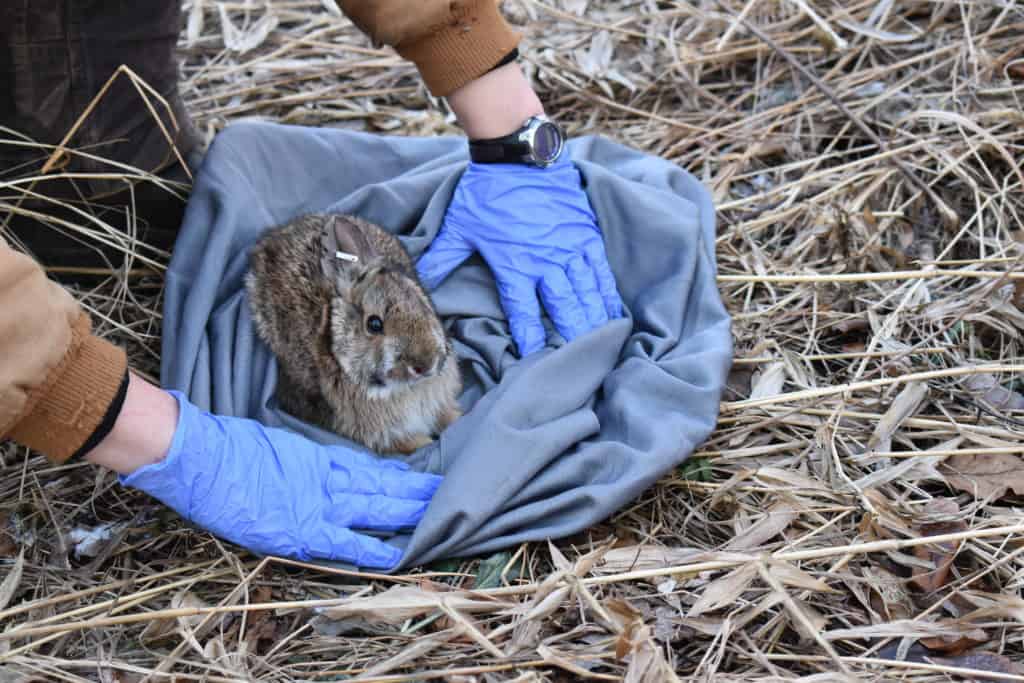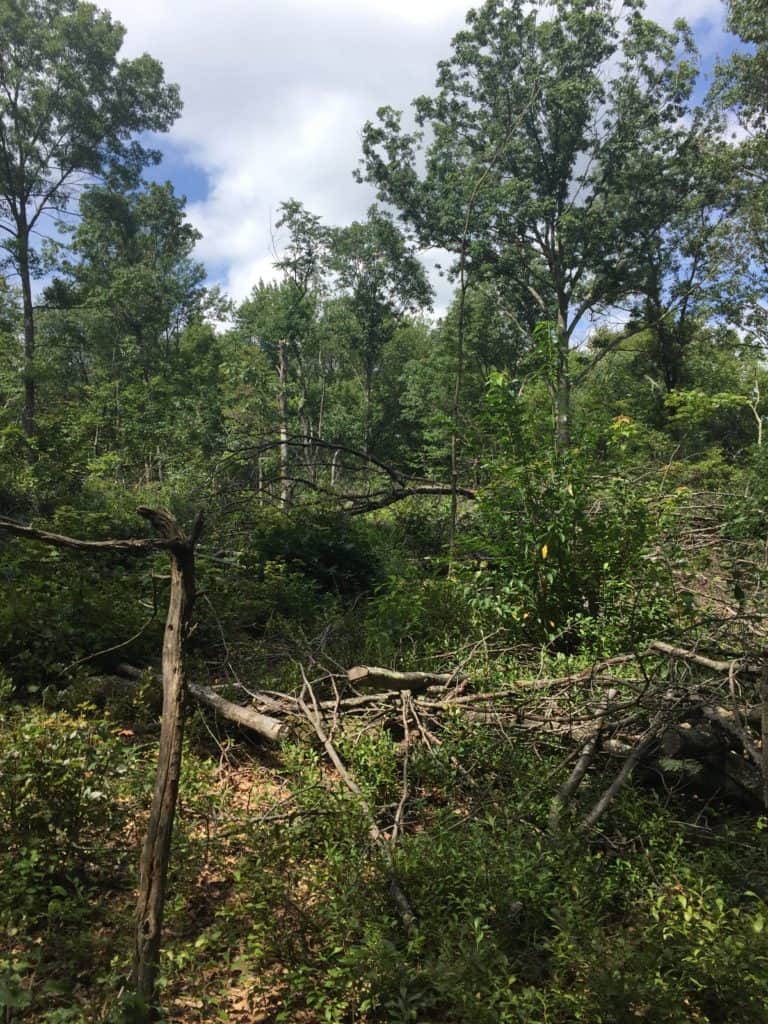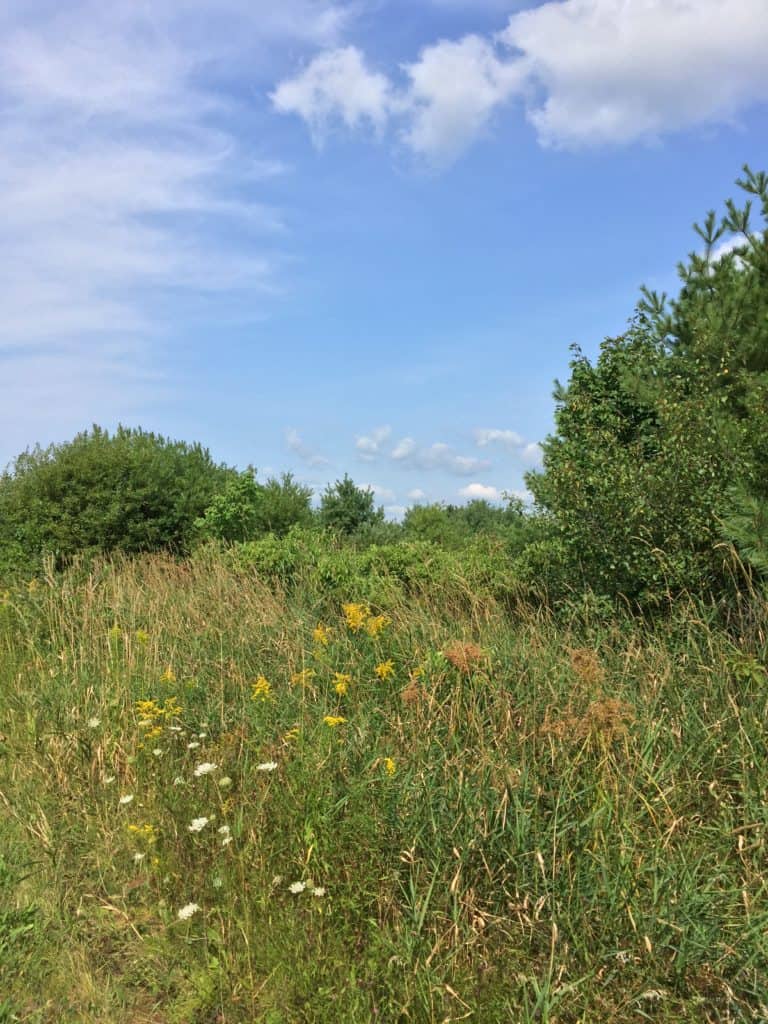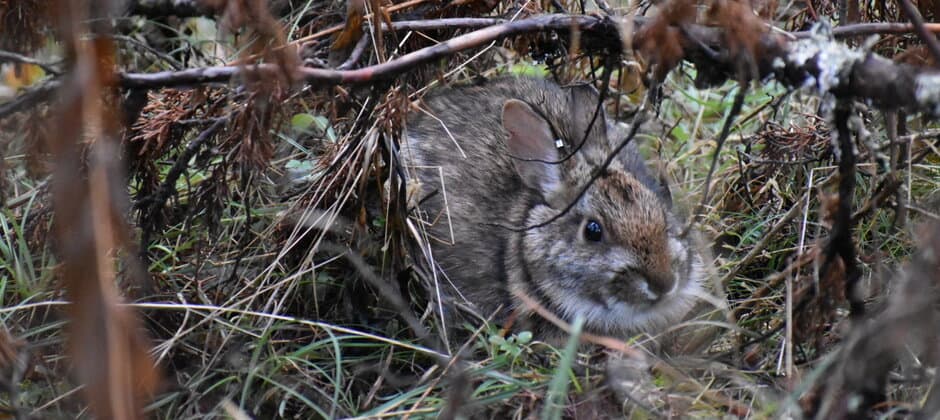Share this article
Clearing forests for imperiled rabbits may instead help invasives
Measures taken to improve habitats for New England cottontails in New York state may actually favor their invasive cousins, the eastern cottontail.
Clearcutting trees and conducting prescribed fires may be creating an ecological trap for the imperiled native rabbits.
“Any benefit New England cottontails get from early successional shrublands is erased when you have eastern cottontails,” said Amanda Cheeseman, a postdoctoral science and forestry researcher in at the State University of New York and the lead author of a study published recently in Ecology and Evolution.

An eastern cottontail being released after tagging. Credit: Amanda Cheeseman
The New England cottontail (Sylvilagus transitionalis) was considered for listing under the federal Endangered Species Act in 2016, and while ultimately, its federal listing was denied, the species is still of special conservation concern in New York state. Other states have listed the species as threatened or endangered.
Most of the information scientists have on New England cottontail survival is from studies conducted in Maine and New Hampshire, Cheeseman said. But the rabbits don’t face the same competition with eastern cottontail (Sylvilagus floridanus) in these states as they do farther southwest.

In this area, the canopy was thinned only lightly to promote New England cottontail survival over eastern cottontails. Credit: Amanda Cheeseman
Wildlife managers have been taking a number of steps to improve ecological conditions for the rabbits. Often, this amounts to clearing forests and using prescribed fires that reduce canopy cover and lead to early successional vegetation thought to favor rabbits. But Cheeseman wanted to see whether these changes might also impact the dynamic between the native New England cottontails and the nonnative invaders, the eastern cottontails, which are becoming commonplace throughout the region.
The team trapped rabbits in a variety of different ecosystem types and fit the animals with radio telemetry collars before releasing them. They found that rabbits don’t live very long — which wasn’t surprising when they compared it to other studies.
But the research also provided some new findings. After running the location data they received through models, they found that the native rabbits had higher survival in more forested areas and areas with more native shrubs. They had low survival in open shrublands with more invasive shrubs. Eastern cottontail preferences were the opposite. Their survival tended to decrease as shrublands became more forested. “They did really well in these open early successional shrublands,” Cheeseman said.
The researchers also checked tick burden on the animals they captured and found. They found not only that ticks commonly fed on cottontails, but that survival in juvenile rabbits of both species decreased rapidly in some cases when they had more ticks.

An example of invasive-dominated early successional shrubland that typically sees more eastern cottontail use. Credit: Amanda Cheeseman
Density patterns also indicated that New England cottontail numbers were highest in mid-successional shrublands that have a really dense cover, but this effect was lost when eastern cottontails were present. While New England cottontail densities were lower in forested shrublands, eastern cottontails didn’t use forested shrublands as much and New England cottontail densities were not affected by eastern cottontails in these areas, suggesting these areas may act as a refuge from their non-native competitors.
Cheeseman said that the research shows clearcut forests and fires meant to create early successional vegetation might be creating an ecological trap for the native rabbits, as these areas favor the eastern cottontail invaders in New York state, at least in the short-term. While these early successional areas will improve over time for the native species, in the future, she said that managers might want to change their tactics to focus on creating canopy gaps, or managing for more persistent shrublands instead of just clearing areas of forest.
Header Image: A New England cottontail in late successional red cedar forest. Credit: Amanda Cheeseman








